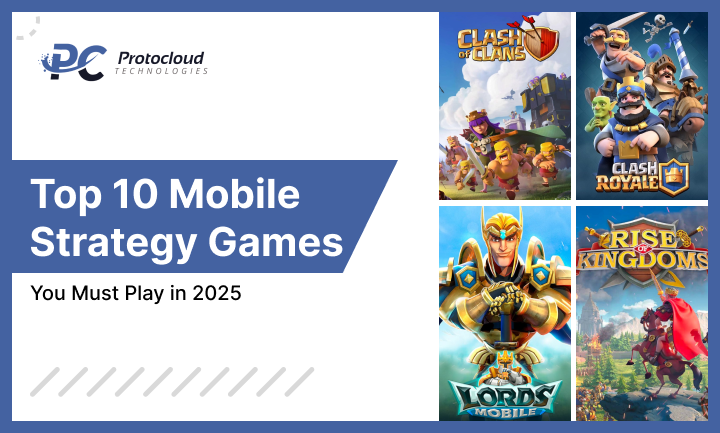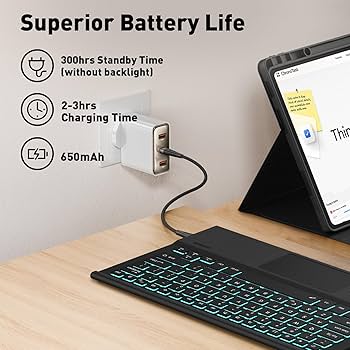Introduction
In the annals of Gaming History, few genres have disrupted the industry landscape as violently and permanently as Battle Royale. What began as niche modifications for military simulations has exploded into a dominant cultural force, reshaping Gaming News cycles, hardware manufacturing priorities, and the very definition of Competitive Gaming. The premise is deceptively simple: drop a large number of players onto a shrinking map, scavenge for resources, and be the last person or team standing. However, beneath this straightforward loop lies a complex web of technical engineering, psychological game design, and evolving meta-strategies.
From the gritty realism of PlayerUnknown’s Battlegrounds (PUBG) to the stylized building mechanics found in Fortnite News, the genre has forced developers to push the boundaries of Game Development. It has influenced everything from Mobile Gaming accessibility to the specifications of high-end Gaming PCs. This article delves deep into the technical architecture, strategic nuances, and hardware implications of the Battle Royale phenomenon, exploring how titles like Apex Legends, Call of Duty: Warzone, and others have cemented themselves as pillars of modern entertainment.
Section 1: Genesis, Core Mechanics, and Industry Disruption
From Mods to Mainstream
The roots of Battle Royale are firmly planted in the modding community. While the concept draws inspiration from Japanese cinema and dystopian fiction, its interactive birth occurred within PC Gaming simulations. Mods for ARMA 2 and ARMA 3 laid the groundwork, introducing the high-stakes, one-life gameplay loop. These early iterations were rough, often plagued by bugs, but they offered an adrenaline rush that traditional deathmatch shooters could not replicate. This era highlights the importance of Game Mods in driving innovation within the Gaming Industry.
The release of standalone titles like H1Z1 and eventually PUBG marked the transition from niche hobby to AAA Games status. PUBG, in particular, standardized the formula: the air-drop insertion, the shrinking “circle” or “zone” to force combat, and the loot-based progression system. This success prompted giants like Epic Games to pivot their strategies rapidly, leading to the development of Fortnite Battle Royale, which leveraged the Unreal Engine to deliver a more arcade-like, accessible experience that bridged Console Gaming and PC audiences.
The Gameplay Loop and Psychological Hooks
At its core, Battle Royale is a hybrid of FPS Games (First-Person Shooters) and survival mechanics. Unlike arena shooters where respawning is instant, the “permadeath” aspect of a Battle Royale match instills a sense of tension and consequence. Every decision—from choosing a landing spot to engaging a distant enemy—carries weight. This high-stakes environment is a goldmine for Twitch News and Game Streaming, as viewers are drawn to the narrative arc of a single match: the quiet looting phase, the mid-game rotations, and the chaotic final circle.
Furthermore, the genre introduced a new monetization model that has since permeated Overwatch News, Valorant News, and League of Legends News: the Battle Pass. By offering cosmetic rewards rather than pay-to-win advantages, developers ensured competitive integrity while generating continuous revenue to fund live-service updates, server maintenance, and Esports News prize pools.
Section 2: Technical Architecture and Game Design Analysis
Networking and Server Performance

From a Game Design and engineering perspective, Battle Royale presents massive challenges. Traditional multiplayer shooters typically host 12 to 16 players. Battle Royale games often host up to 100 or even 150 players on a single server instance. This requires robust netcode to manage the data transfer between the server and clients. The “tick rate”—the frequency at which the server updates the game state—is a critical metric. Lower tick rates can lead to “desync,” where a player’s position on their screen does not match the server’s reality, a common complaint in early PUBG and Call of Duty News discussions.
Developers utilizing Unity News and Unreal Engine News updates have had to implement sophisticated techniques like “Network Relevancy” or “Interest Management.” This means the server only sends data to a player regarding entities (enemies, loot, vehicles) that are relevant to them (i.e., within a certain distance or line of sight). This optimization is crucial for maintaining performance on lower-end hardware, including Gaming Laptops and consoles like the Nintendo Switch, often covered in Nintendo News.
Level of Detail (LOD) and Map Streaming
The maps in Battle Royale games are colossal compared to traditional maps in Counter-Strike News or Overwatch News. Rendering a massive island seamlessly requires aggressive Level of Detail (LOD) management. As a player looks into the distance, the game engine renders low-polygon models of buildings and terrain. As the player approaches, these are swapped for high-fidelity assets. This transition must be seamless to prevent “pop-in,” which can be visually jarring and competitively detrimental.
Storage speed plays a vital role here. The shift toward SSDs in modern PlayStation News and Xbox News cycles has allowed developers to stream assets faster, enabling more detailed environments and faster traversal speeds (like the tridents in Apex Legends or vehicles in Warzone) without the game stuttering.
Cross-Platform Play and Input Balancing
Battle Royale was the catalyst for the widespread adoption of cross-platform play. Breaking down the walls between Xbox, PlayStation, and PC created a unified Gaming Community. However, this introduced the technical and design challenge of balancing inputs. Game Controllers rely on aim assist to track targets, while Gaming Mice offer raw precision. Balancing these two inputs remains one of the most contentious topics in Apex Legends News and Fortnite News, requiring constant tweaking of aim assist strength and recoil patterns to ensure a fair playing field.
Section 3: Hardware Implications and Competitive Insights
The Arms Race: Hardware Requirements
To compete at a high level in Battle Royale, hardware matters. The open-world nature of these games taxes both the CPU (for player physics and draw calls) and the GPU (for rendering complex environments). PC Gaming enthusiasts often prioritize high frame rates over visual fidelity to reduce input lag.
- Graphics Cards: High-end GPUs from NVIDIA and AMD are essential for maintaining 144FPS or 240FPS, which is the standard for competitive play. Technologies like DLSS and Reflex are critical for reducing latency.
- Gaming Monitors: A high refresh rate monitor (144Hz, 240Hz, or even 360Hz) provides smoother motion clarity, allowing players to track fast-moving targets in titles like Apex Legends.
- Gaming Peripherals: Lightweight Gaming Mice and mechanical Gaming Keyboards with rapid actuation switches give players a millisecond advantage. Audio is equally important; high-quality Gaming Headsets are required to pinpoint enemy footsteps (spatial audio), a key survival mechanic.
Esports and the Competitive Meta
The Esports News sector has been heavily influenced by Battle Royale. Organizing tournaments for BR games is logistically complex, requiring custom lobbies and specialized spectator clients to capture the action across a massive map. The “meta” (most effective tactics available) evolves rapidly based on patch notes.
For example, in Apex Legends, the meta often revolves around “rotation” characters like Valkyrie or defensive anchors like Gibraltar. In Fortnite, the meta is defined by building speed and editing structures. Understanding these nuances is what separates casual players from those who compete in global championships. This depth has also influenced Strategy Games and MOBA Games players to migrate to the genre, attracted by the macro-strategic elements of positioning and resource management.
![Xfce desktop screenshot - xfce:4.12:getting-started [Xfce Docs]](https://www.marketresearchfuture.com/uploads/reports/11277/e-sports-market_infograph.webp)
The Rise of Mobile and Cloud Gaming
The scalability of engines like Unreal and Unity has allowed Battle Royale to conquer Mobile Gaming. Titles like PUBG Mobile and Call of Duty Mobile generate billions in revenue, proving that the core loop translates well to touchscreens. Furthermore, Cloud Gaming services are making these high-fidelity games accessible on low-power devices, democratizing access to the genre. This shift is vital for Indie Games developers looking to enter the space, as the potential audience is no longer limited by expensive hardware.
Section 4: Strategic Recommendations and Future Outlook
Best Practices for Aspiring Players
Whether you are playing on a console or a high-end rig, success in Battle Royale boils down to three pillars: Positioning, Loot Efficiency, and Game Sense.
- Positioning over Aim: In FPS Games like Call of Duty, aim is king. In Battle Royale, positioning often trumps raw mechanical skill. Holding the “high ground” or rotating early to the safe zone prevents you from being “gatekept” by enemies.
- Loot Efficiency: New players often spend too much time looting. The goal is to get a serviceable loadout and move. Staring at the ground looking for a slightly better attachment leaves you vulnerable.
- Information Gathering: Use the tools provided. In Apex Legends, use the ping system. In Warzone, use UAVs. Information on enemy locations allows for third-partying (engaging two teams already fighting), a staple strategy in the genre.
The Evolution: Extraction Shooters and Beyond
The Battle Royale genre is not static. We are currently seeing a divergence toward “Extraction Shooters” (like Escape from Tarkov or the DMZ modes in COD). These games keep the looting and large maps but remove the shrinking circle, focusing instead on survival and successful exfiltration. This evolution appeals to players seeking a more tactical, RPG Games-like progression system where loot is kept between matches.

Additionally, the integration of VR Gaming is the next frontier. Games like Population: One have shown that the Battle Royale formula works in Virtual Reality, offering a level of immersion that flat screens cannot match. As Gaming Tech improves, we can expect larger player counts, more destructible environments, and deeper integration of AR Gaming elements.
Pros and Cons of the Genre
Pros:
- High replayability due to RNG (Random Number Generation) of loot and circles.
- Strong social elements; squad-based gameplay encourages communication.
- Constant content updates via live-service models keep the game fresh.
- Accessible entry point (mostly Free-to-Play).
Cons:
- Steep learning curve for new players joining established games.
- Can be frustrating due to “bad luck” (no weapon on landing).
- High time commitment per match compared to arcade shooters.
- Microtransaction fatigue for cosmetic items.
Conclusion
The Battle Royale genre has transcended its origins as a Gaming News novelty to become a foundational pillar of the interactive entertainment industry. It has driven innovation in Game Development, pushed the limits of Gaming Hardware, and created entirely new economies within the Gaming Industry. From the cartoonish, creative chaos of Fortnite to the tactical precision of PUBG, these games offer a unique blend of survival, strategy, and skill that resonates with millions globally.
As technology advances, we will likely see the lines blur between Battle Royale, MMORPGs, and the Metaverse, creating persistent digital worlds where the battle for survival is just one component of a larger experience. For gamers, developers, and hardware manufacturers alike, understanding the mechanics and culture of Battle Royale is essential for navigating the future of play.












